
This parent guide supports parents in helping their child at home with the 7th grade Social Studies content.
- Subject:
- Social Studies
- Material Type:
- Reference Material
- Vocabulary
- Author:
- Kelly Rawlston
- Letoria Lewis
- Date Added:
- 10/12/2022

This parent guide supports parents in helping their child at home with the 7th grade Social Studies content.

This resource accompanies our Rethink 7th Grade Social Studies course. It includes ideas for use, ways to support exceptional children, ways to extend learning, digital resources and tools, tips for supporting English Language Learners and students with visual and hearing impairments. There are also ideas for offline learning.
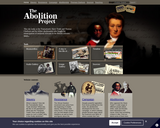
This site looks at those who fought for the ending of the Transatlantic Slave Trade and the emancipation of enslaved Africans in the British colonies. The site has been designed to provide background information, lesson ideas and tools for teachers and learners.

This resource provides information on Adam Smith's moral and political philosophy.

In this lesson, students learn the meaning of capitalism, socialism, and communism and explain how a pure capitalist society is different from a pure communist society. Students identify and explain the problems with how communist societies function in practice.

In this lesson, students will analyze the Grimm fairy tale Hansel and Gretel and evaluate the major characters in terms of their rights and responsibilities in terms of power and authority.

This video explains how the ideas of various governments influenced the development of the United States government. Teachers should view the video prior to showing it to students and determine if the violent scene invovling Julius Caesar (on the video around 3:19) is appropriate for their class.
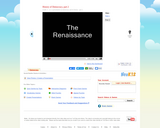
This video explains how the ideas of various governments influenced the development of the United States government.
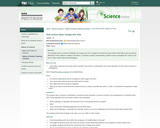
In this lesson, students work, in groups or individually, to research the life and ideas of a person involved in the development of a scientific theory which faced opposition from the society in which it was developed.

This resource supports English language development for English language learners. This lesson plan guides students through a process of evaluating John Locke’s theory of “living in a natural sateâ€. Students discuss and learn about three basic freedoms: life, liberty, and property through a mix of brainstorming, framed discussion, and writing techniques designed especially for English Language Learners. The lesson includes links to PDF handouts.
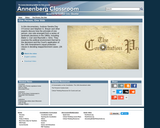
This resource contains a video which discusses how the principle of one person and one vote emerged from a series of landmark decisions in the 1960's, including Baker v. Carr and Reynolds v. Sims. The video examines the political environment that led to the decisions and the Court's application of the 14th Amendment's equal protection clause in deciding reapportionment cases.

This course was created by the Rethink Education Content Development Team. This course is aligned to the NC Standards for 7th Grade Social Studies.

This course was created by the Rethink Education Content Development Team. This course is aligned to the NC Standards for 7th Grade Social Studies.

Many factors contributed to the eventual success of the American colonies as they revolted against British rule. American leadership, the timely support of international allies, and international respect and recognition played major roles in the struggle for independence. Several documents and engravings held by the National Archives help to illustrate these important factors that led to the founding of the United States.
This lesson focuses on the American Revolution, which encouraged the founding fathers' desire to create a government that would, as stated in the Preamble, insure domestic tranquility and provide for the common defense.
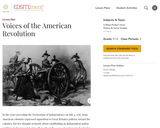
This lesson helps students "hear" some of the diverse colonial voices that, in the course of time and under the pressure of novel ideas and events, contributed to the American Revolution. Students analyze a variety of primary documents illustrating the diversity of religious, political, social, and economic motives behind competing perspectives on questions of independence and rebellion.